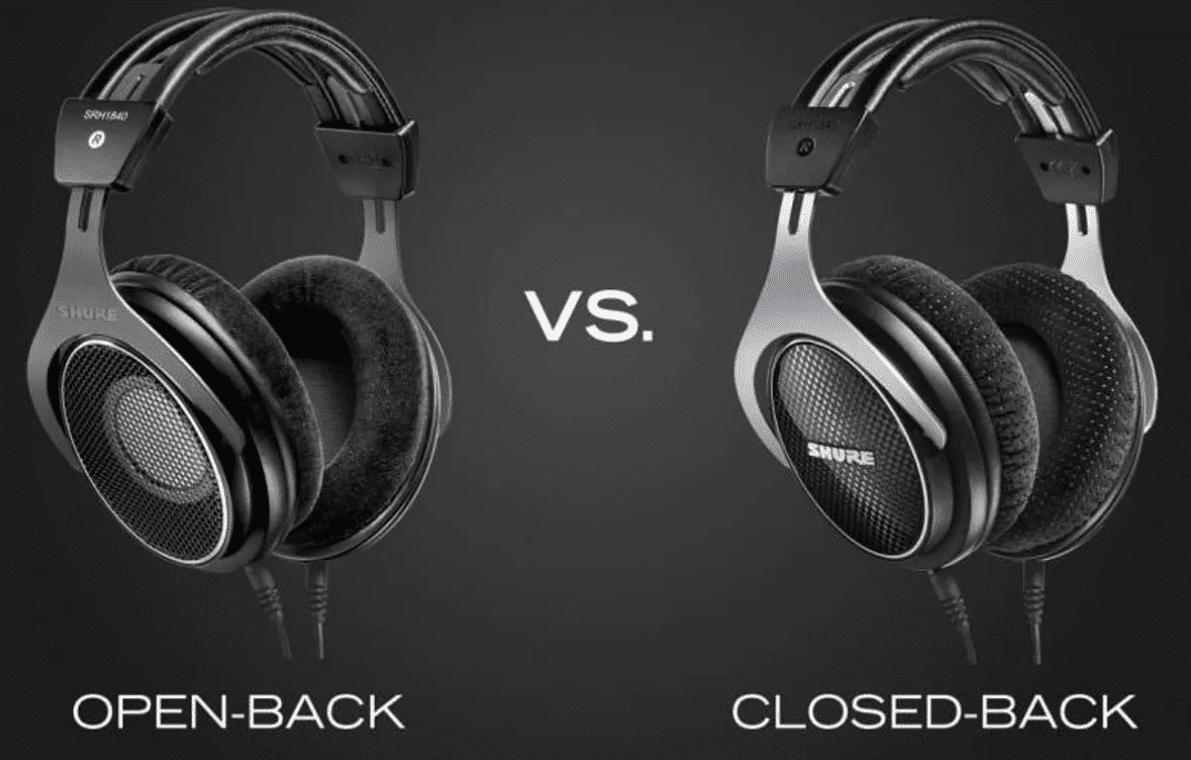No products in the cart.
News
Open-Back vs. Closed-Back Headphones: Soundstage and Isolation
When choosing headphones, one of the key decisions you’ll face is whether to opt for open-back or closed-back designs. These two styles offer distinct listening experiences, each with its own advantages and disadvantages. This guide explores the key differences between open-back and closed-back headphones, focusing on soundstage, noise isolation, and ideal use cases to help you choose the perfect pair for your listening style.

Open-Back Headphones
Open-back headphones have earcups with openings that allow air and sound to pass through. This design creates a more natural and spacious soundstage, but it also means that sound can leak in and out of the headphones.
Pros:
- Wider Soundstage: Open-back headphones create a wider and more spacious soundstage, making it seem like the music is coming from around you rather than inside your head. This is especially beneficial for genres like classical music or orchestral soundtracks, where a sense of space and instrument separation is desired.
- More Natural Sound: The open design allows air to flow freely, resulting in a more natural and airy sound with less pressure buildup inside the earcups.
- Reduced Ear Fatigue: The open design can also reduce ear fatigue, as it allows your ears to breathe and prevents heat buildup.
Cons:
- Sound Leakage: Sound can leak in and out of open-back headphones, making them less suitable for quiet environments like libraries or offices. Others around you may be able to hear your music, and you may be distracted by external noise.
- Reduced Noise Isolation: Open-back headphones offer less noise isolation compared to closed-back headphones, making them less ideal for noisy environments like airplanes or crowded streets.
Closed-Back Headphones
Closed-back headphones have sealed earcups that prevent air and sound from passing through. This design provides better noise isolation and prevents sound leakage, but it can also create a more “closed-in” soundstage.
Pros:
- Noise Isolation: Closed-back headphones offer superior noise isolation, blocking out external sounds and distractions. This makes them ideal for noisy environments like airplanes, buses, or busy offices.
- No Sound Leakage: The sealed design prevents sound from leaking out, so you can listen to your music without disturbing others.
- Better Bass Response: Closed-back headphones often have a more pronounced bass response due to the sealed earcups.
Cons:
- Narrower Soundstage: The closed design can create a narrower soundstage, making the audio feel more “closed-in” and less spacious.
- Potential for Heat Buildup: The sealed earcups can trap heat around your ears, which can be uncomfortable for some users.
Comparison Table
| Feature | Open-Back Headphones | Closed-Back Headphones |
|---|---|---|
| Soundstage | Wider and more spacious | Narrower and more “closed-in” |
| Noise Isolation | Less noise isolation | Superior noise isolation |
| Sound Leakage | Sound leaks in and out | No sound leakage |
| Bass Response | Can be less pronounced | Often more pronounced |
| Comfort | Can be more comfortable for some users due to reduced heat buildup | Can be comfortable, but may trap heat |
Which is Right for You?
The best choice between open-back and closed-back headphones depends on your listening environment and preferences:
- Choose open-back headphones if: You prioritize a wide soundstage and natural sound, and you typically listen in quiet environments.
- Choose closed-back headphones if: You need good noise isolation to block out distractions, or you want to prevent sound leakage to avoid disturbing others.
Conclusion
Open-back and closed-back headphones offer distinct listening experiences, each with its own strengths and weaknesses. By understanding the differences in soundstage, noise isolation, and other factors, you can choose the best headphone design for your needs and preferences.
Do you prefer open-back or closed-back headphones? Share your thoughts in the comments below!
Related Articles
- How to Choose the Right Headphones
- Best Over-Ear Headphones for Immersive Sound
- Headphones Buying Guide for Audiophiles on a Budget
